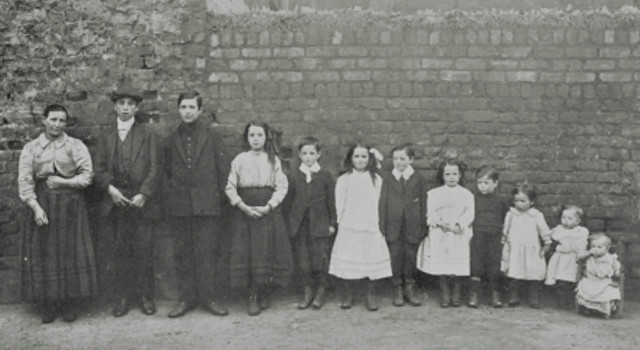Articles

No Comments
By Voices
On 20, Jul 2015 | No Comments | In Gender | By Voices
Mothers First! The Women’s Co-operative Guild’s Maternity Letters
Ruth Cohen, Independent Researcher
The Women’s Co-operative Guild is most remembered for its poignant collection, ‘Maternity: letters from working women’, first published in 1915. By then, it was a unique campaigning organisation with over 32,000 members, mostly married women from better off sections of the working class.
It was the Guild’s dynamic general secretary, Margaret Llewelyn Davies, who collected 386 letters from its officials to support its campaigning during the war for state maternity care. She selected 160 for publication, and they were truly shocking. Nearly one in four women had lost at least one child before its first birthday, and there were high rates of miscarriage and stillbirth. Many told of chronic ill-health, and extreme fatigue; sometimes resulting from poor medical care, often exacerbated by frequent pregnancies – though some openly discussed abortion and contraception.
![Image © The British Library Board [W25/9927]](http://www.voicesofwarandpeace.org/wp-content/uploads/2015/07/t00017-89-1000.jpg) Although these women did not have to work regularly outside the home, and their husbands were mostly on at least average wages, those with large families still struggled to make ends meet. And, crucially, there was no safety net to protect against unemployment, short time or illness, which could and did plunge families into poverty.
Although these women did not have to work regularly outside the home, and their husbands were mostly on at least average wages, those with large families still struggled to make ends meet. And, crucially, there was no safety net to protect against unemployment, short time or illness, which could and did plunge families into poverty.
Many women suffered because they had no help with heavy housework and child care. It was often difficult to pay for a doctor’s visit, or for a nurse or midwife to deliver the baby; some could only afford it by taking on casual work while heavily pregnant. Some women were so malnourished that they could not breast feed. When there was not enough money to feed a family, the mother came last:
“I can say truthfully my children have died from my worrying how to make two ends meet and also insufficient food”.
Even when they wanted to know more about how to look after themselves when pregnant, they often could not follow medical advice to rest and eat well.
When the collection was published in 1915, two editions quickly sold out to glowing reviews. There was considerable anxiety during the war about the alleged threat to the survival of the British “race” posed by high infant mortality; often blamed on working class mothers’ ‘ignorance’ and ‘fecklessness’. The publication of the maternity letters gave them a powerful voice which challenged this, and helped to shift the terms of policy debates. And since their re-publication in the 1970s, the letters have provided modern readers with unique insights into women’s lives at this time.



Submit a Comment